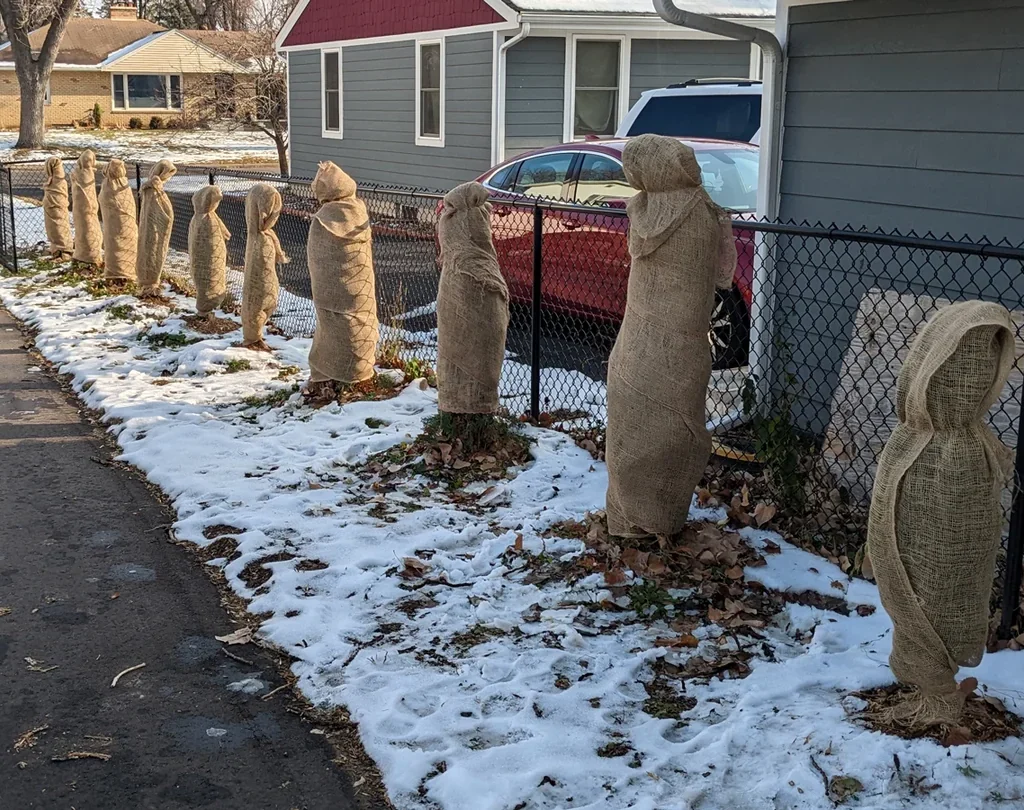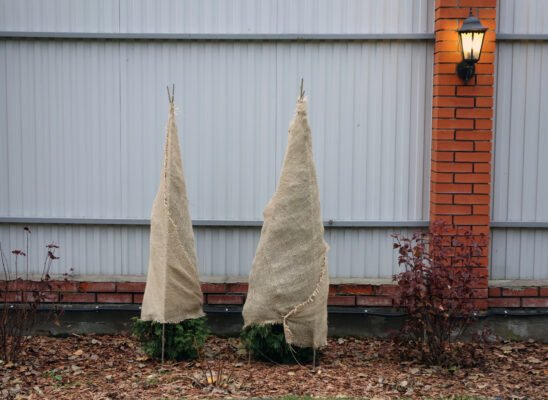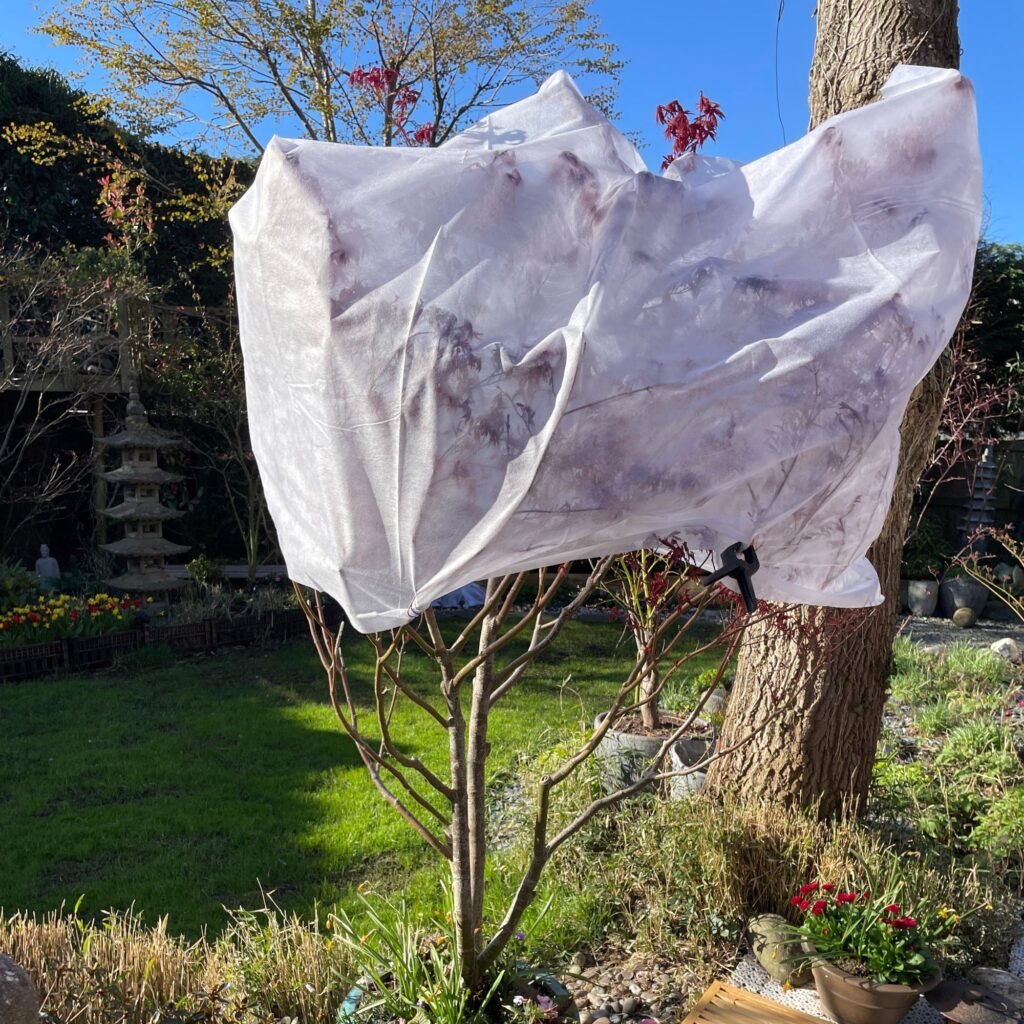Winter brings its own set of challenges for trees, especially young or delicate ones. Freezing temperatures, fluctuating weather, strong winds, and sunscald can all cause significant damage. One commonly suggested protective measure is tree wrapping. But is it truly necessary? Experts weigh in, providing guidance on when, why, and how to wrap trees for winter protection. This article explores the science, benefits, potential risks, and best practices for tree wrapping, helping homeowners and gardeners make informed decisions.
Understanding Winter Tree Stress

Trees face multiple stressors during winter. Recognizing these challenges helps determine whether wrapping is appropriate.
1. Frost Cracks
Frost cracks occur when bark contracts and expands rapidly due to temperature fluctuations. These cracks often appear on the south and southwest sides of the tree trunk, where daytime sun warms the bark, followed by rapid nighttime cooling. Frost cracks can compromise the structural integrity of young or thin-barked trees.
2. Sunscald
Sunscald, or southwest injury, results from intense winter sunlight heating the bark. When temperatures drop suddenly, the cambium layer beneath the bark can be damaged, causing dieback or even tree death. This is particularly common in young fruit trees or thin-barked species like maple, birch, and honey locust.
3. Winter Desiccation
Evergreen trees and shrubs may experience winter desiccation, losing moisture faster than roots can absorb it from frozen soil. Cold winds exacerbate the drying effect, leading to brown or scorched foliage.
4. Mechanical Damage
Heavy snow, ice accumulation, and strong winds can physically damage branches or bend the trunk, leaving trees vulnerable to pests and disease.
What Experts Say About Tree Wrapping

Tree wrapping is a method used to protect tree trunks from frost cracks, sunscald, and minor mechanical damage. Experts, however, caution that wrapping is not universally necessary for all trees or climates.
1. Young vs. Mature Trees
According to horticulturists, young trees—especially those less than three to five years old—benefit most from wrapping. Mature trees have thicker bark that naturally resists sunscald and frost cracks, reducing the need for protective wraps.
2. Species Considerations
Not all species need winter wrapping. Thin-barked species like maple, birch, fruit trees, and honey locust are highly susceptible to winter damage and gain the most from wrapping. Thick-barked trees such as oaks and pines generally do not require wrapping.
3. Climate Matters
Tree wrapping is most beneficial in regions with extreme temperature fluctuations, strong winter sun, or harsh winds. In milder climates, wrapping may be unnecessary and can even cause harm if not monitored properly.
4. Timing Is Critical
Experts emphasize timing. Wrap trees in late fall, after temperatures have dropped but before the first hard frost. Removing wraps in early spring is equally important to prevent moisture buildup, mold, and insect infestations.
Benefits of Wrapping Trees
Tree wraps provide several benefits when used correctly:

1. Prevent Sunscald
Wraps act as a protective barrier, shielding the bark from intense winter sunlight and minimizing the risk of sunscald damage. By reflecting sunlight and reducing temperature fluctuations, wraps keep the cambium layer intact.
2. Reduce Frost Cracks
Tree wraps help moderate trunk temperatures, reducing the rapid expansion and contraction that leads to frost cracks. This is especially important for young or thin-barked trees.
3. Protect Against Animal Damage
Wrapping can deter rabbits, rodents, and deer from chewing on young trunks, which can girdle the tree and disrupt nutrient flow. Using physical guards like hardware cloth in combination with wraps adds extra protection.
4. Guard Against Mechanical Injury
Wraps can help cushion minor impacts from wind, ice, and snow, preventing small branches or trunks from splitting. While they won’t prevent all structural damage, wraps offer an additional layer of protection during harsh winter storms.
Risks and Misconceptions of Tree Wrapping

While tree wrapping has benefits, misuse or overuse can be harmful. Experts highlight several risks:
1. Moisture Trapping
Leaving wraps on too long or wrapping too tightly can trap moisture against the bark, promoting fungal growth, mold, and rot. It’s crucial to remove wraps in early spring as temperatures warm.
2. Pest Habitat
Wrapped trees can provide shelter for insects and rodents, especially if the wrap is loose or damaged. Regular inspection throughout winter is necessary to prevent infestations.
3. Restricting Growth
Tightly wrapped trunks can constrict growth and damage the bark. Wraps should be snug but not compressing, allowing the tree to expand naturally.
4. False Sense of Security
Some gardeners assume wrapping alone is sufficient winter protection. Experts stress that wraps are just one component of comprehensive tree care, which should include proper watering, mulching, pruning, and species selection.
Best Practices for Wrapping Trees

If you decide wrapping is appropriate, follow expert-recommended practices for safe and effective protection:
1. Choose the Right Material
Use commercially available tree wraps, burlap, or breathable fabric specifically designed for winter protection. Avoid plastic wrap, which traps moisture and prevents airflow.
2. Wrap Correctly
- Start at the base of the tree, wrapping upward to just below the first major branches.
- Overlap each layer slightly for coverage.
- Secure the wrap with string, twine, or tape without constricting the trunk.
- Ensure the wrap is loose enough to allow air circulation and trunk expansion.
3. Protect Young Fruit Trees
Fruit trees are particularly prone to winter damage. Wrap trunks after pruning and before the first frost. In addition to wrapping, consider using reflective materials or tree guards to maximize protection against sunscald and frost.
4. Remove Wraps in Spring
As temperatures rise and growth resumes, remove all wraps. Leaving them on too long can lead to moisture buildup, fungal infections, or pest infestations.
5. Monitor Regularly
Check wrapped trees periodically during winter for damage, pests, or shifts in the wrap. Adjust or replace as needed to maintain optimal protection.
Alternatives to Tree Wrapping
For gardeners seeking other winter protection strategies, several alternatives complement or replace tree wrapping:
- Mulching: Applying 2–4 inches of organic mulch around the base of the tree helps insulate roots and moderate soil temperature.
- Tree Guards: Hardware cloth or plastic tree guards can protect against animal damage without wrapping the entire trunk.
- Windbreaks: Installing temporary windbreaks with burlap or fencing around sensitive trees reduces wind stress and desiccation.
- Proper Watering: Ensure young trees are well-watered before the ground freezes, especially evergreens that continue transpiring during winter.
Expert Recommendations
- Dr. Linda Chalker-Scott, Horticulture Expert: “Wrapping is beneficial for young, thin-barked trees in climates with high winter sun and temperature swings. However, it’s not a one-size-fits-all solution—monitoring and proper removal are key.”
- Arborist Advice: “Avoid using plastic wraps. They trap moisture and encourage disease. Use breathable materials and remove them in spring to allow the trunk to ‘breathe.’”
- Extension Services: Many state extension programs recommend wrapping trees less than five years old in cold regions but emphasize that mature trees rarely need wrapping unless they are injured or diseased.
Conclusion
Should you wrap trees for winter? The answer depends on the tree species, age, climate, and local conditions. Young, thin-barked trees in regions with harsh winter sun, fluctuating temperatures, or strong winds benefit most from wrapping. However, improper wrapping or leaving wraps on too long can harm trees, promoting fungal growth, pest infestations, or constricted growth.
Tree wrapping is just one tool in a comprehensive winter care plan, which also includes proper watering, mulching, pruning, and wildlife protection. By understanding the science behind winter tree stress and following expert-recommended practices, gardeners can protect their trees effectively, ensuring healthy growth and resilience for years to come.
Wrapping, when done correctly, is not just a precaution—it is an investment in the long-term health and beauty of your trees. Understanding when, how, and why to wrap transforms winter from a season of risk into a season of strategic protection.

Leave A Comment